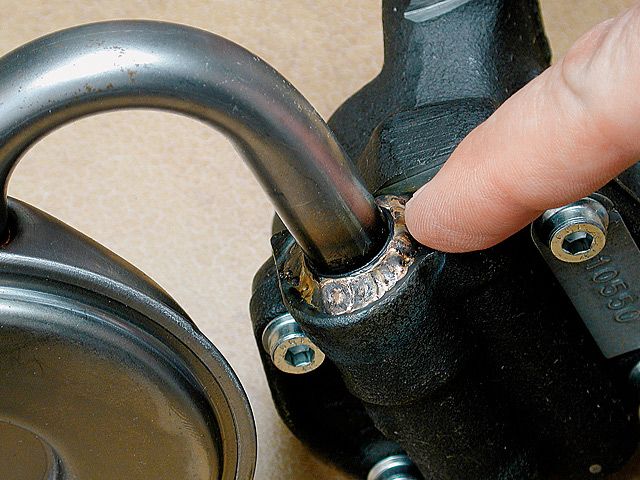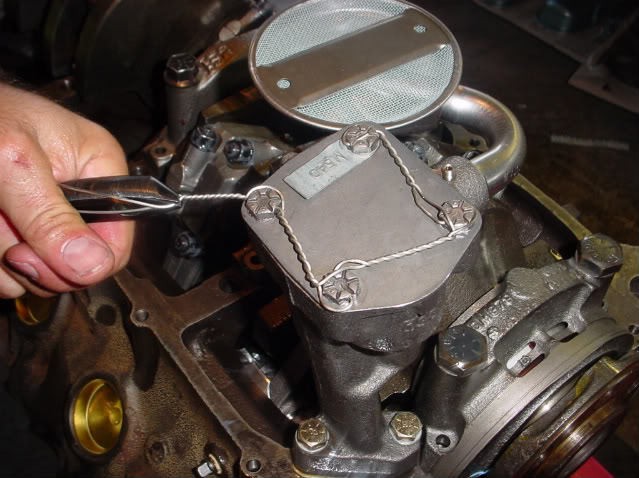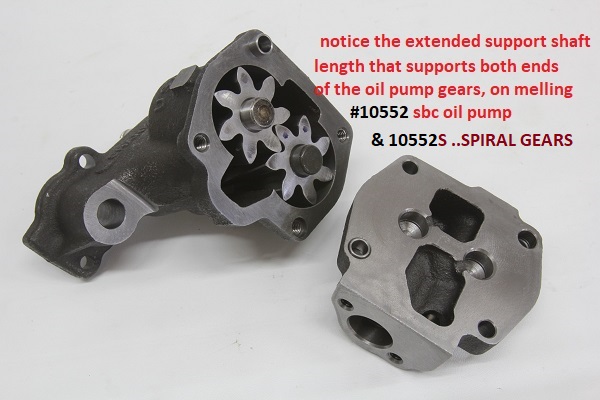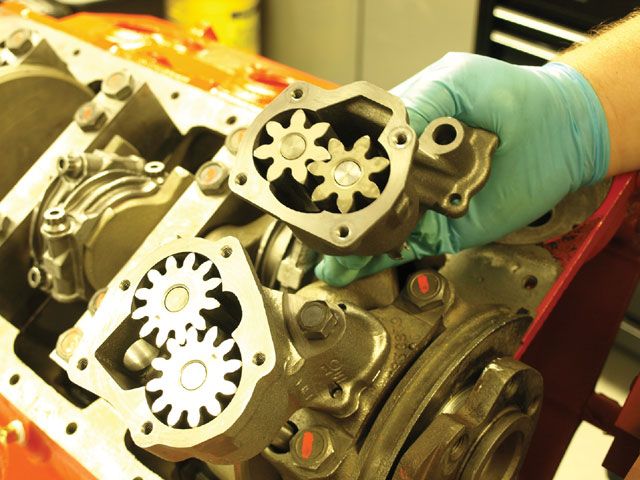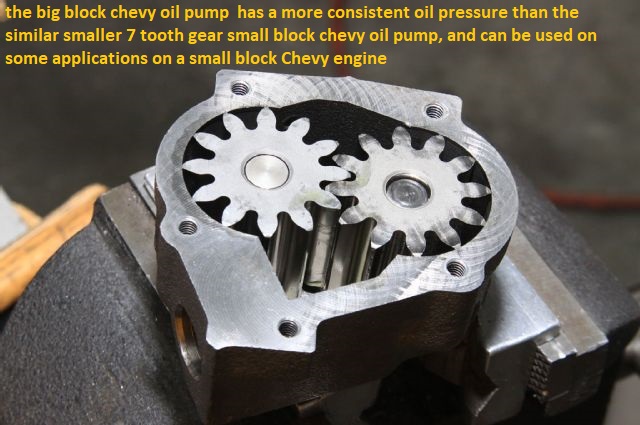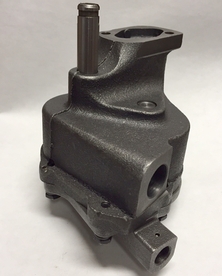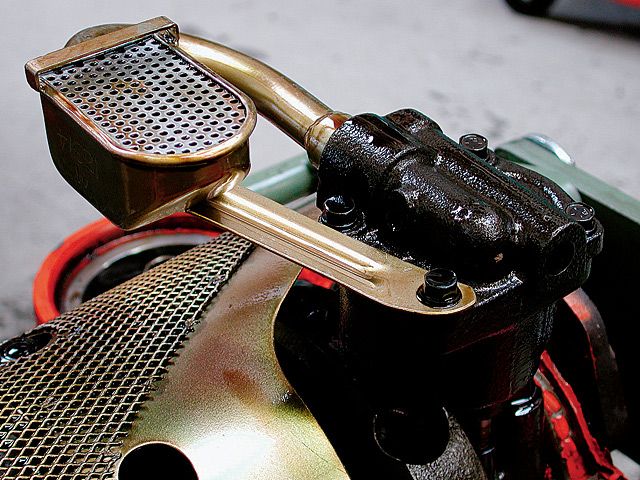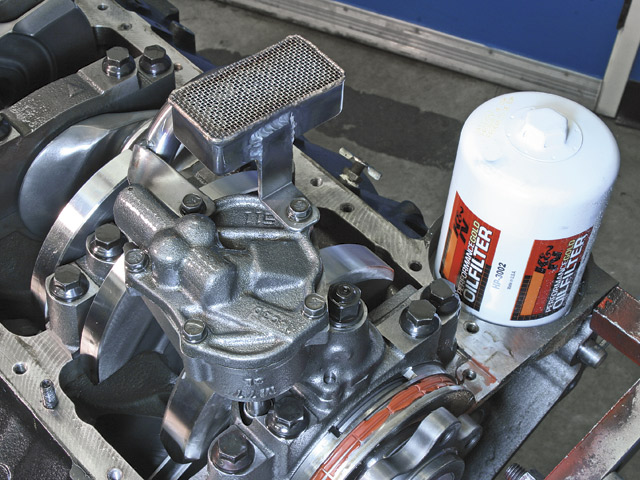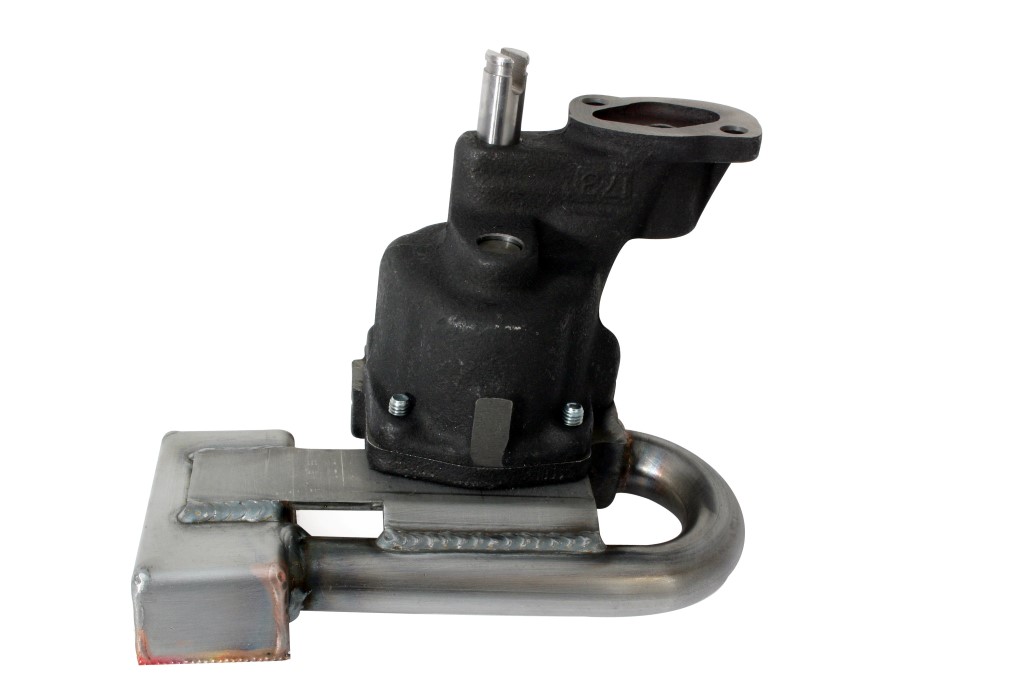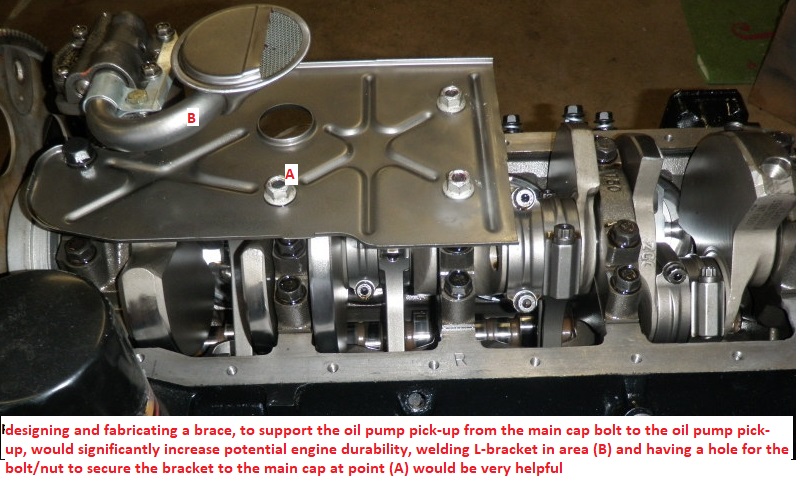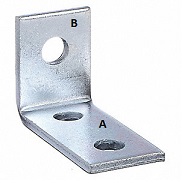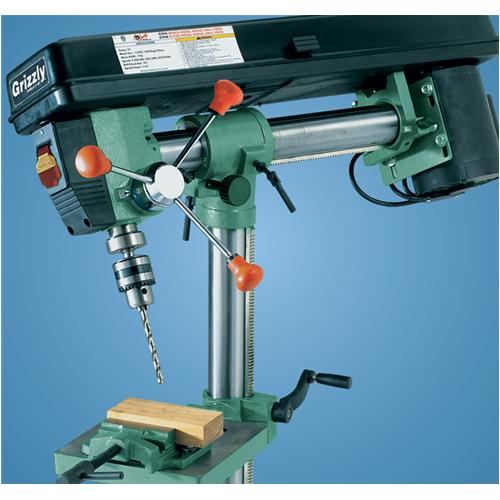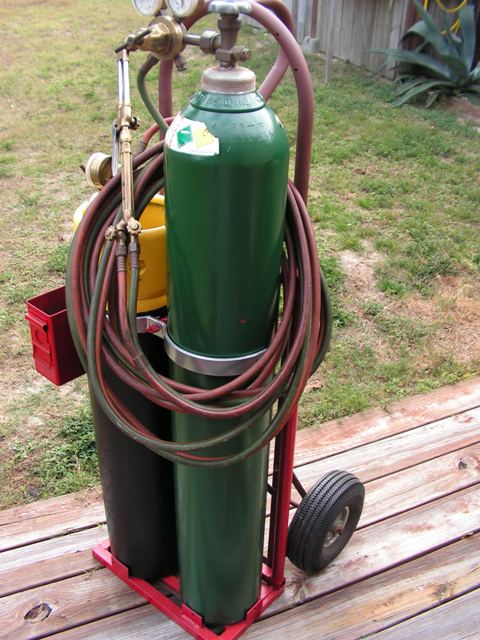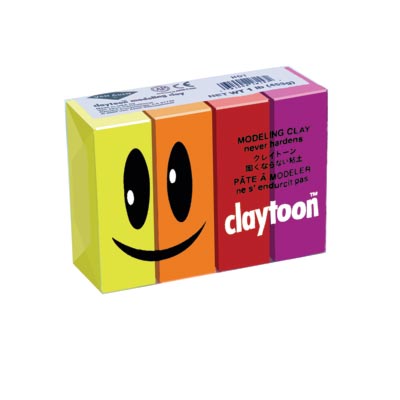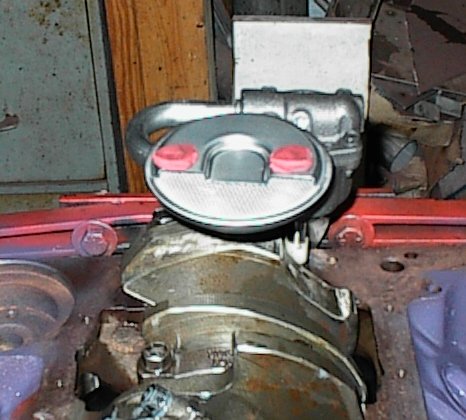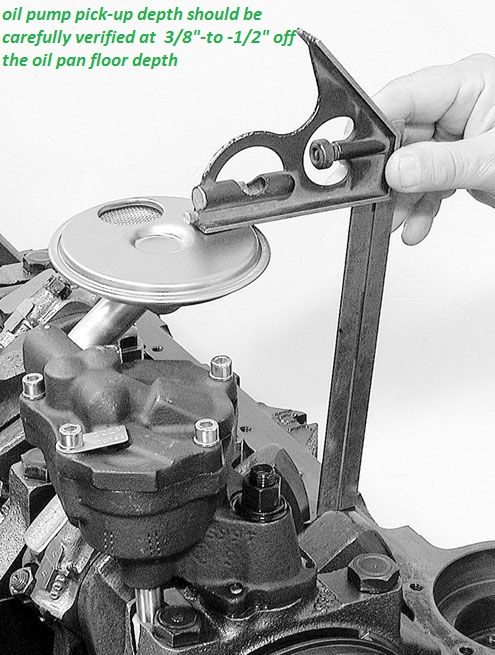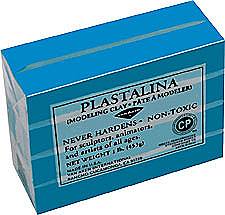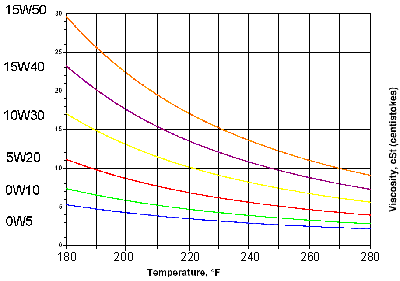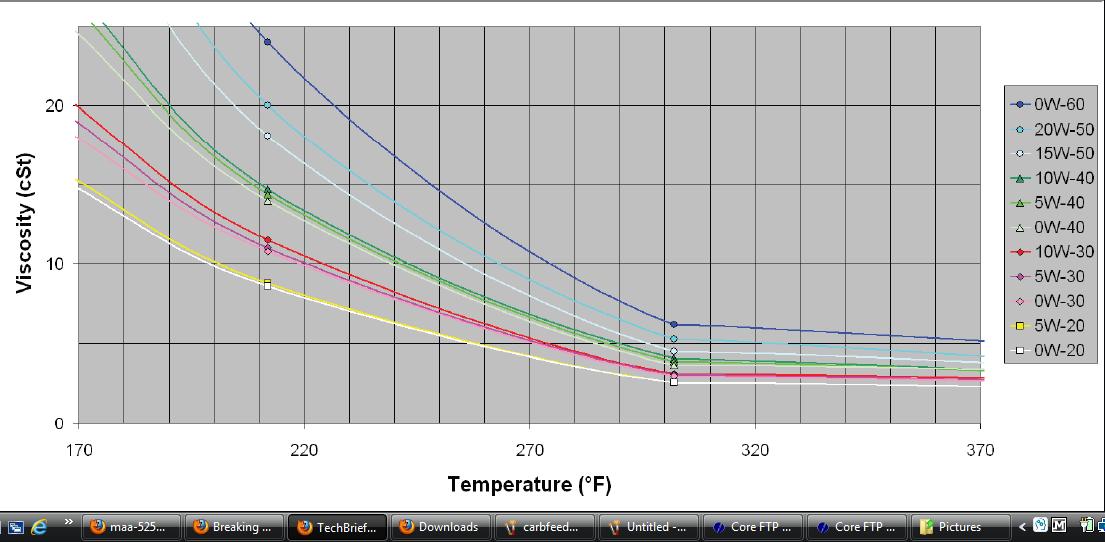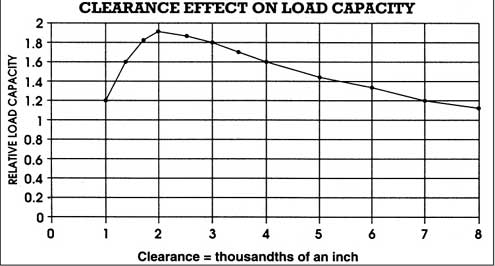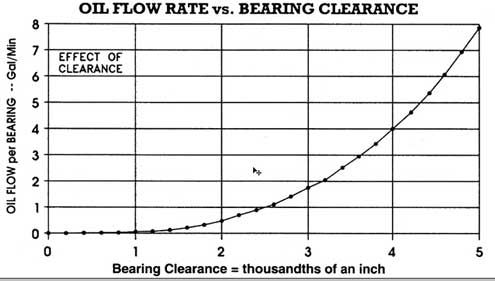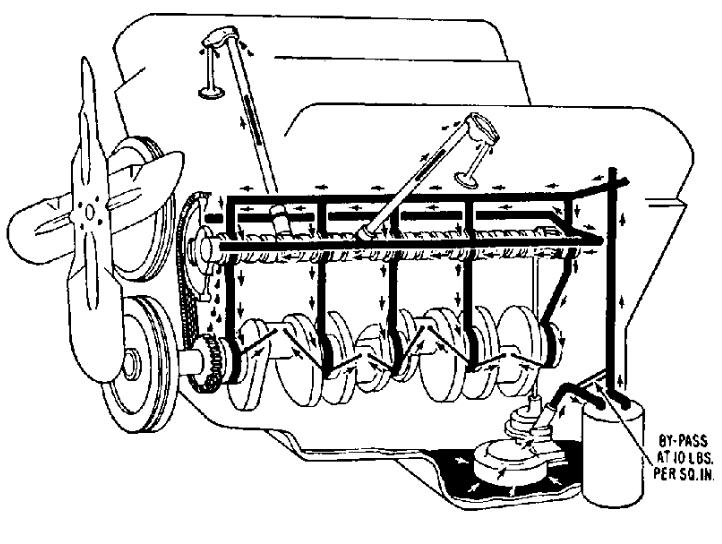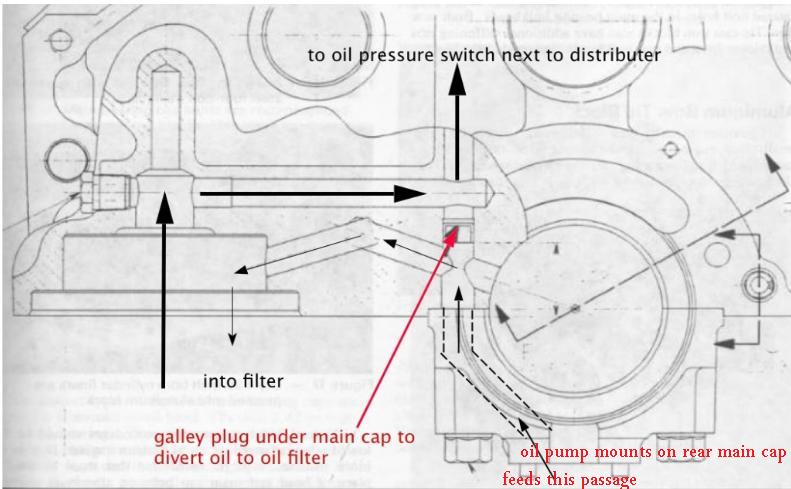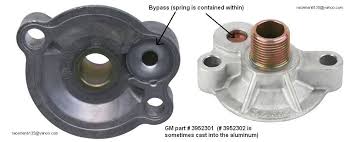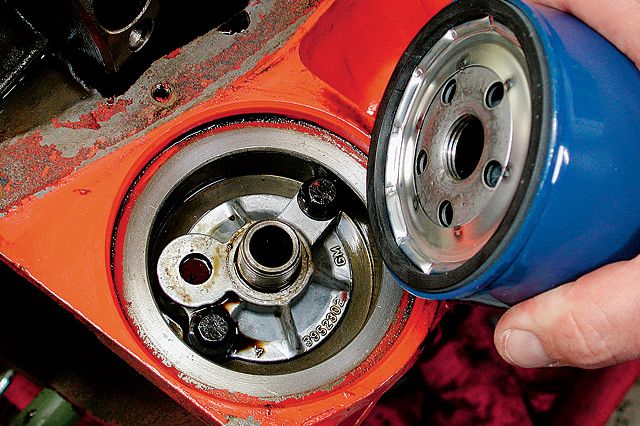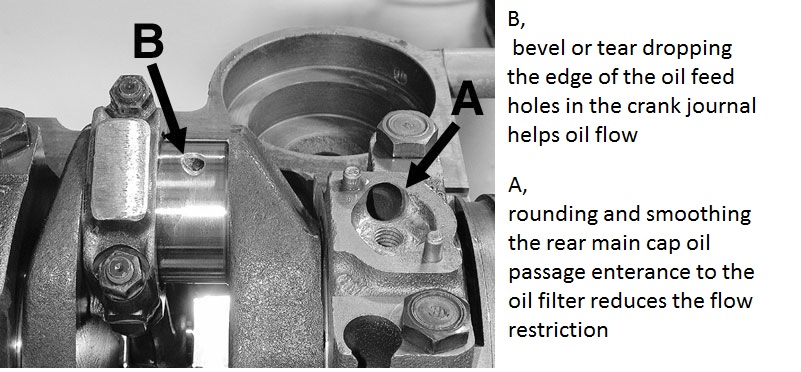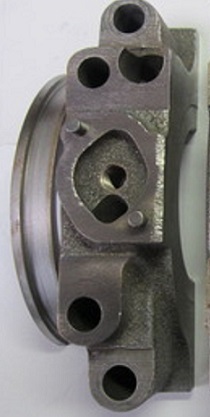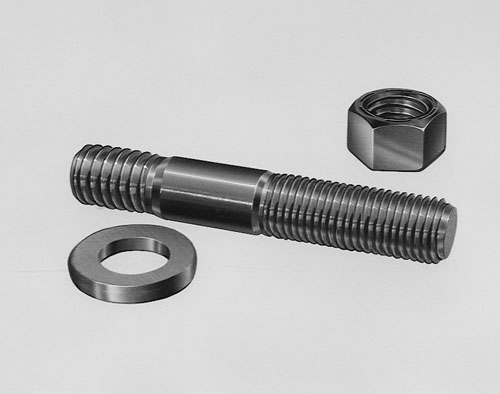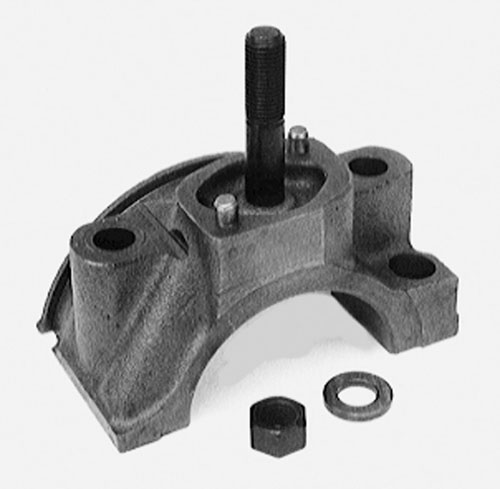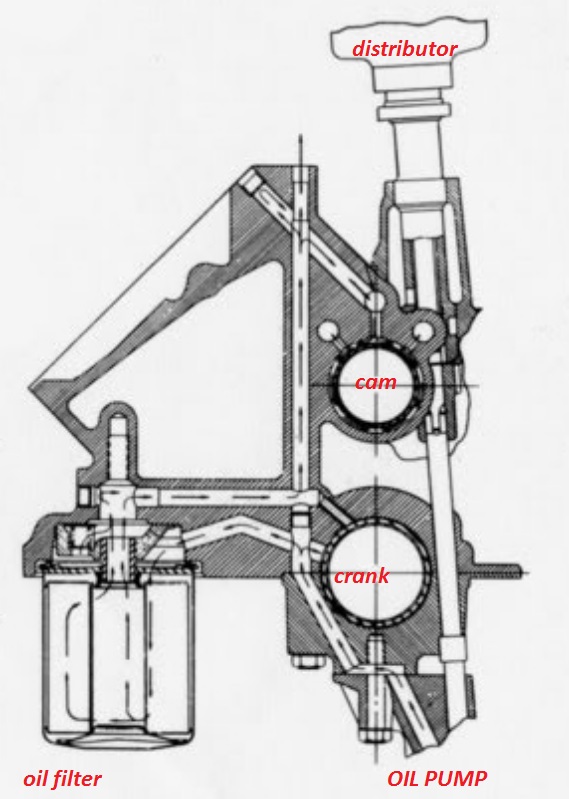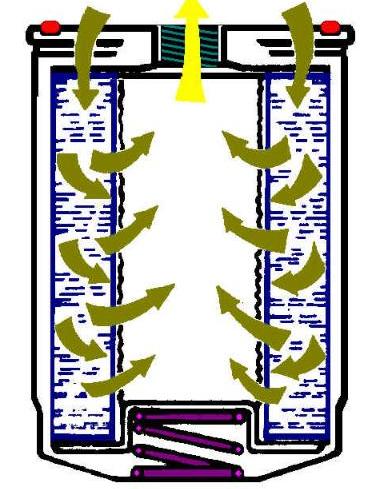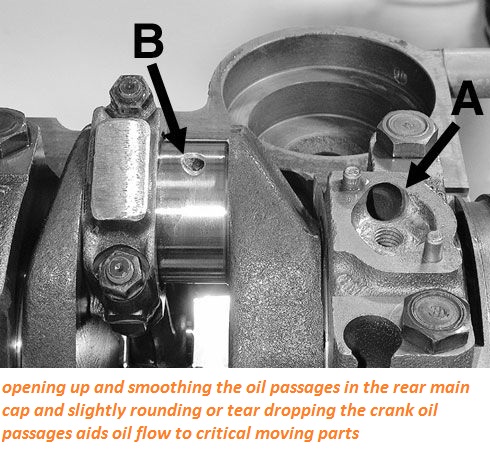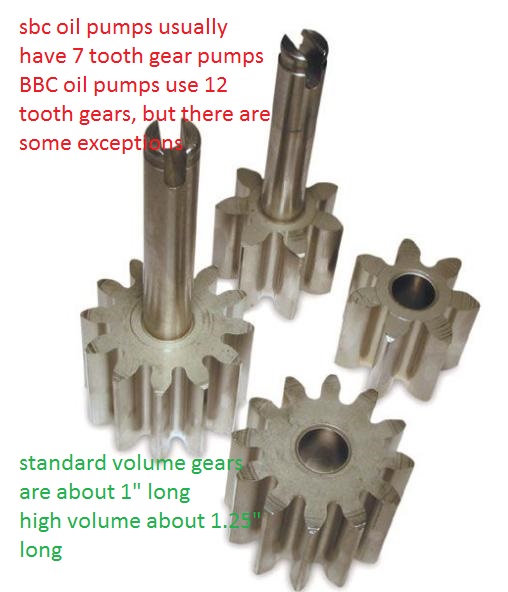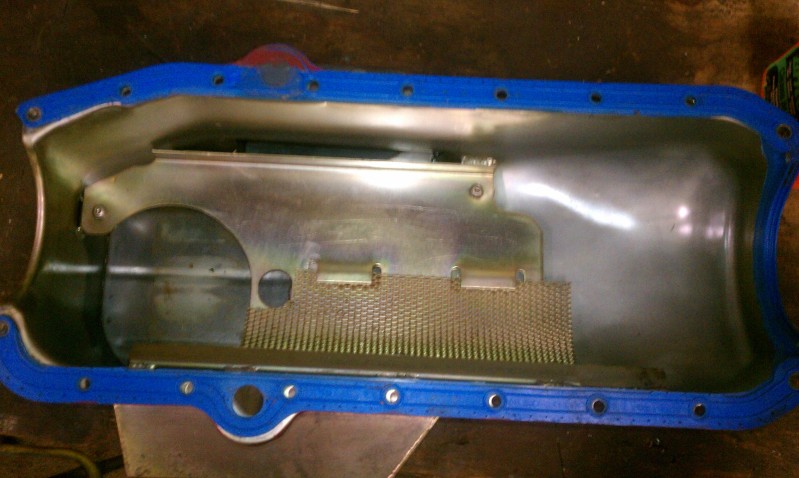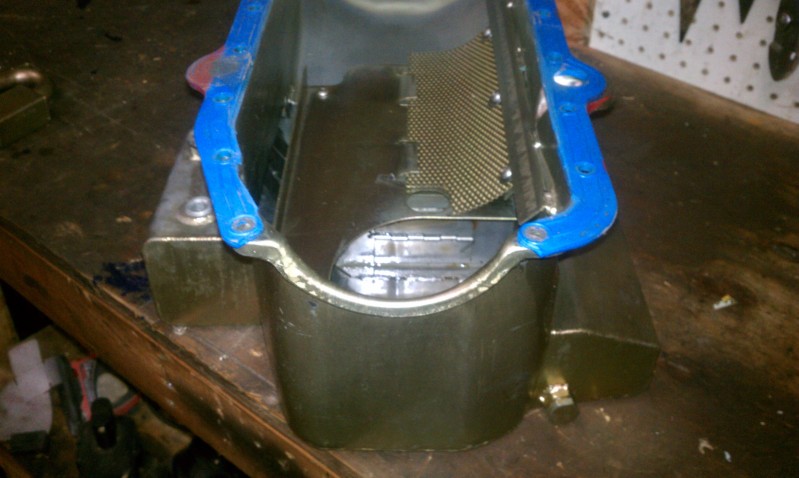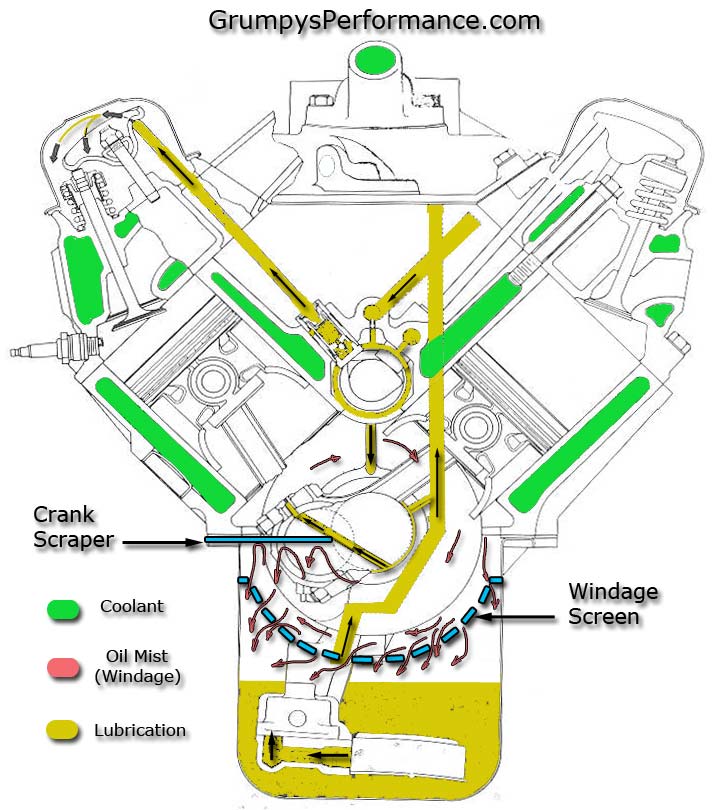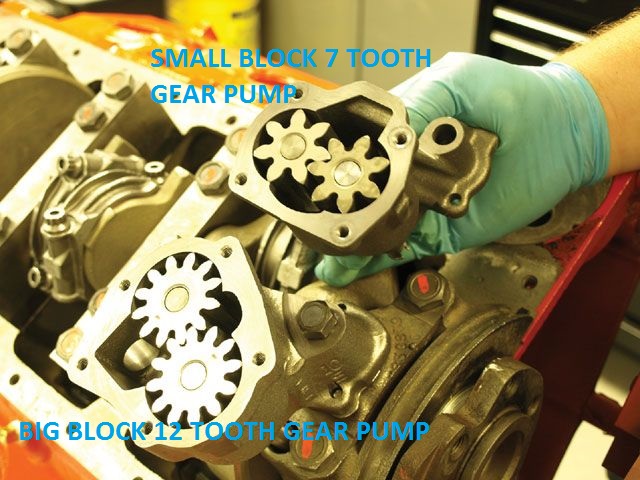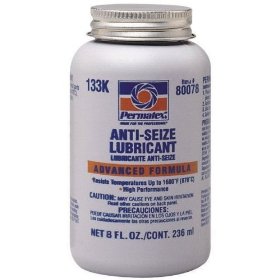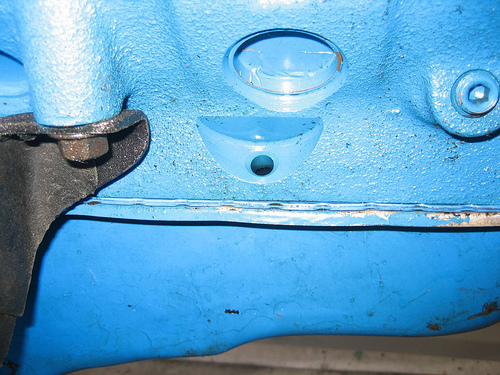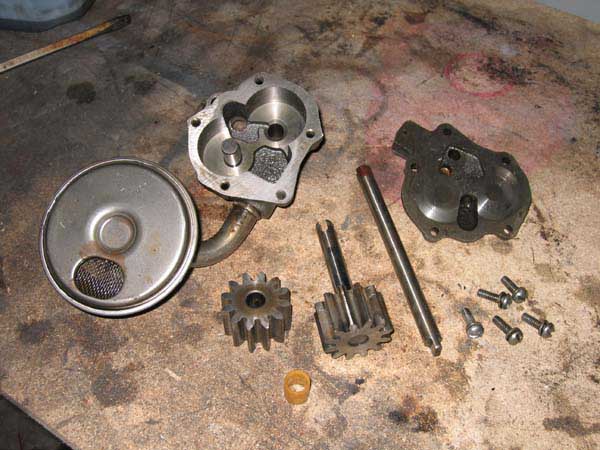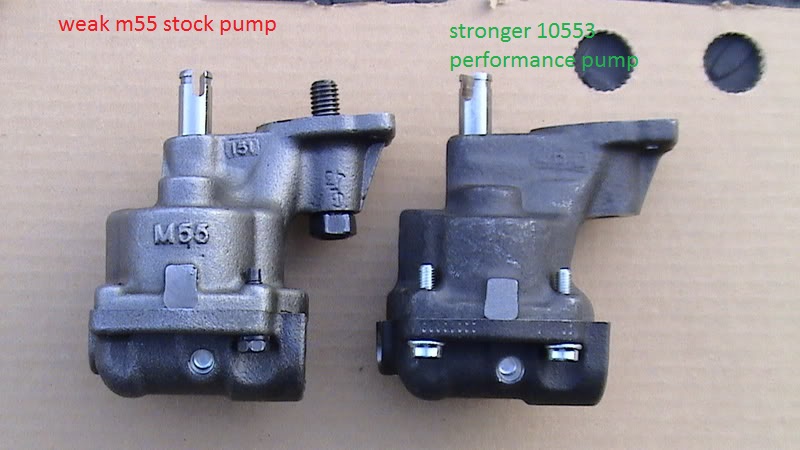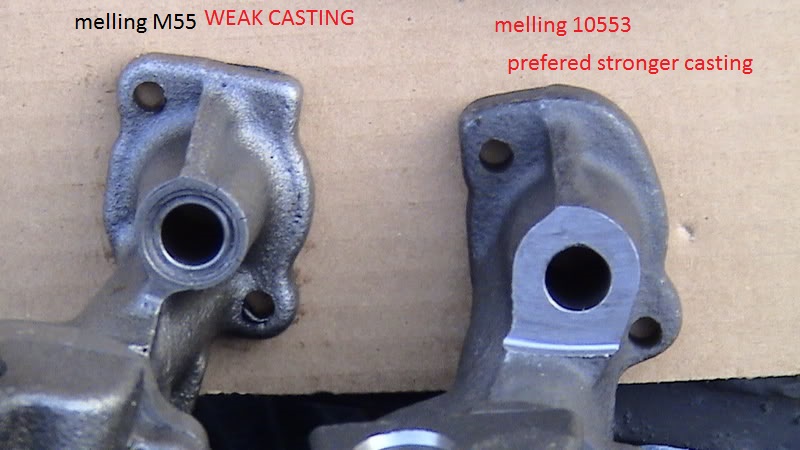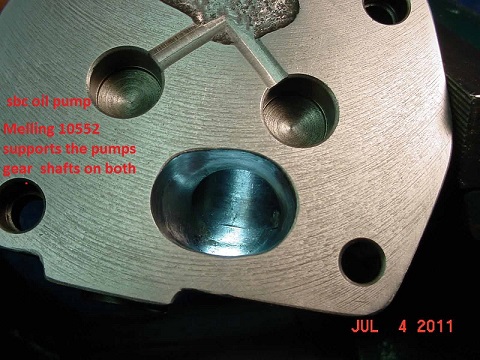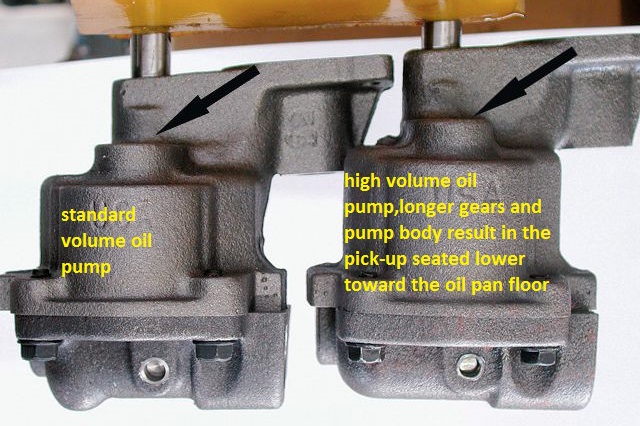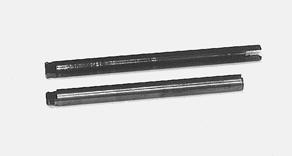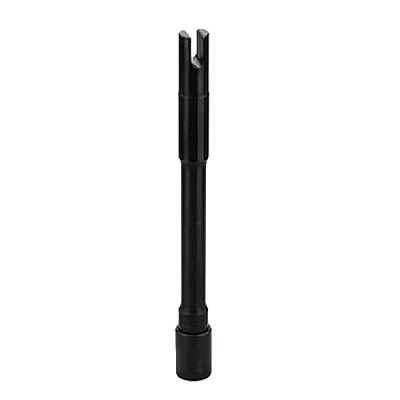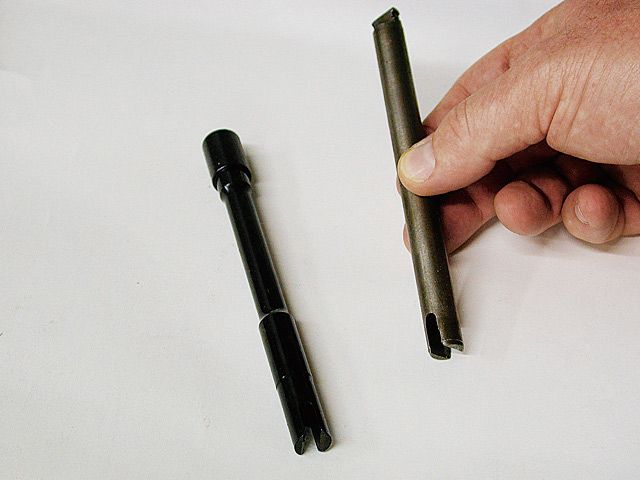Id point out up front that oil pressure on the gauge is the result of the resistance the engines clearances cause to oil flow rates,and the viscosity and temperature of the oil.
if your having any problem, maintaining oil pressure you can either increase the flow rate , of viscosity of the oil used or decrease the engines clearances, increasing the oil flow or viscosity is treating a symptom, decreasing the clearances is treating the problem,both approaches will work if done correctly withing reasonable limits and both approaches have points in their favor, and potential problems, IF THE CORRECT PARTS ARE USED, but controlling the oil flow is key to success. a standard z28 sbc oil pump will provide enough oil for most applications
ITS always a good idea to verify the oil pan floor to oil pump pick-up clearance and to braze the pick-up to the oil pump, to reduce the potential for it to come loose.
yes you can MIG ,TIG or TORCH WELD the pick-up but I found BRAZING works the best and is less likely to warp or crack the pump or pick-up
"how in hell do those twisty, safety wire pliers work?"
well a video should be helpful here! Id also point out that you can buy the wire in several diameters and the thicker sizes are far more difficult to use, home depot sells the 22 gauge and 18 gauge, the 22-24 gauge is what youll use far more commonly, as its much easier to use,both stainless (PREFERED) and galvanized are used, and will work on 95% of the applications on a car your likely to use.
both G.M. engineering and smokey yunick working for NASCAR and G.M. ENGINEERING,
did extensive testing on engine longevity, and bearing durability in relation to oil pressure
there was no measurable improvement in bearing protection once oil pressure reached 70 psi.
there was an improvement if the volume of oil flow was increased but not pressure,
pressure is simply a measurement of RESISTANCE to flow.

while helical cut gears will run smoother ,
( ESPECIALLY WITH THE STOCK 7 tooth SBC oil pump)
as you potentially have 2 or three gear teeth in various stages of gear tooth contact
(depends on the angle of tooth engagement)
and yes the design will reduce a tendency to produce a pressure pulse, I have not seen this as a major issue.
simply swapping to the standard volume and pressure BIG BLOCK 12 tooth oil pump in a SBC engine all but eliminates the pulse and pressure and volume issues a sbc oil pump has.
as a general rule as your engine oil viscosity is reduced the effort required to pump the oil thru clearances is lower and the pressure reading on the gauge drops, thats not necessarily an indication of lower bearing protection, as thats generally a function of oil quality and its formula, and basic components used, in its design, and generally its increased flow rate increases bearing cooling, a good quality 10w30 should ideally provide 20-22 psi at 800rpm idle (anything over 15-17 psi at 800rpm is fine) and 60-65psi by 5000rpm which is all you can use
from several reports the helical oil pump gears cause several issues,
ranging from excessive noise to more rapid wear and are NOT an advantage
the helical gears tend to move longitudinally in opposite directions ,
(one up one downward) this increases a minor wear issue, not found in the typical strait cut gear pumps (especially the BBC 12 tooth gear pump, where the standard BBC pump cam be used if more oil flow volume is required in heavily modified SBC engines, , but from several people Ive seen posting its a much noisier oil pump, that has not proven to provide any significant advantages
https://www.enginelabs.com/news/tech-video-unique-melling-billet-shark-tooth-oil-pumps-explained/
the difference between a stock capacity BBC and high volume SBC oil pump is minimal,
in the power needed to drive either one, you can use either, oil pump,
Ive used several standard volume bbc oil pumps in SBC engines but the stock z28 SBC oil pump works very well.
neither pump will require anywhere close to 10 hp,
the tests Ive seen in magazines show closer to 2hp at peak rpms for either oil pump.
but you can,t get two identical engine dyno curves on the same engine with no changes and not see a 2 hp variation,
the power used is significantly less with normal .002-.003 clearances and hot 10w30 oil.
you certainly do not need a high volume BBC oil pump on a SBC engine, in most cases,
obviously bearing clearances, oil viscosity , oil temperature,and the other lube system mods will effect the power required to spin any pump,
heres a calculator, if you put in the typical 6 gallons a minute at 65 psi you get less than 1/4 hp required
http://www.wallaceracing.com/oil-pump-hp-calc.php
http://www.badasscars.com/index.cfm/page/ptype=product/product_id=91/prd91.htm
http://www.wallaceracing.com/oil-pump-hp-calc.php
http://garage.grumpysperformance.com/index.php?threads/bbc-oil-pump-in-a-sbc.2598/
Are high volume oil pumps OK to run on the street?
We get asked this one from time to time, and the answer is, it depends on the engine. First off; why do you think you need to run a high volume oil pump? The reason performance and race engines use them is because the clearances are upwards of twice the amount as a stock engine. Those voids flow oil out much quicker so they need more volume to stay filled with oil.
A typical stock engine has about .001" - .0015" of rod and main bearing clearances. When you get into more serious engines you will find rod clearances as much as .002" or more, and crank clearances upwards of .0025" - .003" or more. This is also why in the older days, race and performance engines used to run much thicker oils to help "take-up" all of that space. It was common to see straight 40wt and 50wt race oils in engines back in the day. Now days, with much better oils, we tend to run tighter clearances and much thinner oils. We've learned that thinner oil gets to where it needs to go much quicker and with less effort than thicker oils. Larger clearances on serious performance and race engines drain-out quicker so you need a pump that'll push more oil volume into them to keep those larger clearances full. Stock or mild performance engines don't really require that much oil flow because the clearances are much less and therefore "flow" oil much less.
You can't pump oil where it doesn't want to go. In other words, unless your crank and rod clearances are a lot more than a stock engine, then oil simply isn't going to flow and all you are going to do is make a lot of oil "pressure" but not much additional "flow". There's a HUGE difference between "pressure" and "flow". Contrary to what most guys believe, pressure is actually the negative result of flow. If you had full flow, you would have very little oil pressure. What happens when you eat a rod or main bearing? Your .001" - .003" clearance got chewed-up and is now .020" - .030", or basically ten times more than it is supposed to have, so now you have a huge amount of clearance that oil is just POURING out of. It's like slicing into an artery in your body, blood openly flowing out drops your blood pressure.
Other than the noise of a knocking rod or a squeaking "spun" main bearing, how can you tell when you have a bad bearing problem? The pressure reading on your oil pressure gauge drops WAY down. This is because you've opened-up that clearance way too far and now oil is just pouring out that huge space, which causes the pressure to drop way down. So, you increased the flow, and as a result, decreased the pressure.
Pressure can basically be looked at as "effort". How much effort is the pump going through to push that oil. The thicker the oil, the more the effort, and... the tighter the clearances, the more the effort to push oil into those tight spaces. Just because there is effort there (higher oil pressure) doesn't mean more oil is actually flowing. This again is especially true with thicker oils and why thicker oils create more oil pressure. Let me put this is terms even a kid can understand. Go to the local fast food joint and buy 2 drinks. One soft drink and one milk shake. Take a sip through the straw of the soft drink, now take a sip from the milk shake. It's a hell of a lot harder to sip that thick milk shake up through that straw than it is to sip-up that watery soft drink, right? Oil pumps and oil thicknesses are no different. You increased your effort to sip that milk shake and yet got much less of it into your mouth than you did the soft drink. That's exactly the same thing with oil pressure and oil flow vs. clearances and oil thicknesses, vs. oil volumes and pressures. if you want more milkshake with less effort, get a bigger diameter straw, which is like opening-up clearances on your engine, OR wait until the milkshake gets a bit warmer and thins down a bit. This is exactly like oil pressure dropping when your engine warms-up. It's because the cold, thick oil is requiring more effort (pressure) to push it into those clearances, but when it warms-up and gets thinner, it requires even less pressure, yet your FLOW increased. People seem to think this is such a complicated subject, but it really isn't at all.

Another thing is that higher volume oil pumps put much higher loads on the gears that are driving them, meaning the distributor and cam gears. Chevy engines can handle the higher loads of high volume oil pumps just fine, where most Ford's have troubles. Why? Chevy's use a much larger gear than a Ford does, in fact, it's about twice the size, which means it's about twice as strong. The distributor gear is what takes the load of spinning the oil pump. The more volume you pump through an engine, the more load gets put on that gear.
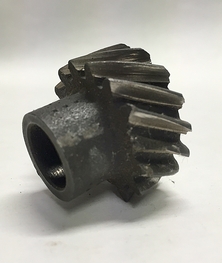
Ford gears tend to get eaten-up because they just aren't big or strong enough to take the load that a high volume pump puts on it. Once you eat-up a distributor gear it is pretty much disaster for the cam gear as well. If you wipe either one out, count on having to replace the cam shaft! This doesn't even get into all of that metal going through the engine, which doesn't help things like bearings and such.
We tend to use stock oil pumps on Ford's and high volume pumps on "performance" Chevy's where the clearances were opened-up a bit. On race prepped Ford engines that we run high volume pumps on, we use aluminum-bronze gears and just keep a close eye on them for premature wear because they WILL wear out in a short amount of time. In fact, that's what aluminum-bronze gears are designed to do... wear-out instead of the expensive cam wearing out on you. Technology has advanced a little these days with the invention of composite gears. They aren't made out of metal, they're made out of a material that is kind of like carbon fiber and are practically indestructible. The cool thing is they are compatible with all types of cams, from cast iron to billet steel, where before... if you didn't have the right type of gear on your distributor to match the type of cam you had, you were looking at disaster in a short amount of time.
When the 5.0L engines came-out with steel roller cams, they also went to steel distributor gears which are much stronger than the older cast iron gears, but they are still about half the size of a GM gear, so it is still about half the strength, which means you still have to be careful if you want to run a high volume pump. A lot of guys get away with it, but that's just it... they're "getting away with it". In other words, we still see a lot of guys NOT get away with it and then they have a serious and expensive problem to deal with. Going back to everything I explained above, did they really even NEED a high volume pump in the first place? Most likely not. If they wanted more flow, they should have probably just ran a thinner oil which would have increased the flow and not put undue loads on the cam and distributor gears.
Now, some people will say to run a stock pump because it won't rob as much power from the engine as compared to a high volume pump, but they install the "high pressure" spring in it to make more pressure. In some cases, pressure makes volume, but again, volume = load. If you ever forget to hook-up your oil pressure gauge line and you fire the engine up, you are going to have a LOT of oil coming out of that tiny little 1/8" line because of the pressure behind it. If there was very little pressure, not much oil would come out. Like I said; pressure makes volume IF there is a means for flow. But again, pressure increases load.
Some people say that a high volume oil pump will pump all of the oil to the top of the motor and basically empty out the oil pan before it can all drain back again. On some engines, such as Oldsmobiles where oil drain back through the heads is a common problem because of the long - small diameter drain back holes, so in cases like that this "could" have some slight truth to it, but 98% of the time, it has no basis. First off; high volume oil pumps only pump about 15% to 20% more oil than a stock pump does. So that would mean that your stock pump is only 15% - 20% away from sucking your oil pan dry. That's highly unlikely. Again, running thicker oils means draining back through long, skinny holes in some of the heads out there (such as Oldsmobiles) MIGHT be an issue because just like that thick milkshake I mentioned earlier, if you turned both the soft drink and the milk shake cups upside down, which one will pour through the straw better than the other? It would probably take (literally) a minute or two for the thick milkshake to even start to dribble out of the straw under gravity conditions, where by that time, the entire soft drink cup would be completely empty. Thicker oils and small drain back holes in heads would have similar results, but in most cases, most engines have plenty of oil drain back holes and areas, so it isn't a problem most of the time.
In a nutshell, 95% of all engines out there, whether stock or mild performance (under 550 HP or so) will do just fine with standard oil pumps, especially if a little thinner oil is used and if the clearances that aren't too loose.
Small block Chevy parts are everywhere. Most have gone through some sort of improvement through the years, while others have stayed relatively the same. The oil pump is one of those parts that haven’t been through much change. Melling just brought some innovation to the game with their Shark Tooth oil pumps – which are based on a unique helical asymmetrical gear.
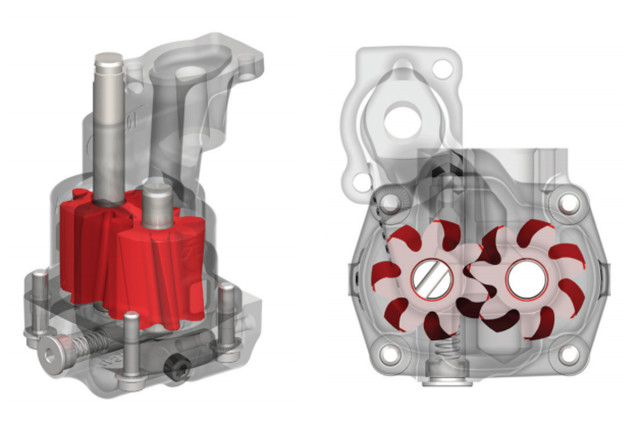
Melling’s new Shark Tooth oil pump.
The typical wet-sump oil pump uses two straight-cut gears to pump oil through the engine. Melling last year released a new gear design that resembles a shark’s tooth. The technical jargon for the new gear is actually a helical asymmetrical gear.
But as Melling’s George Richmond said, “That’s a mouth full!” What exactly is a helical asymmetrical gear? Here is the breakdown on what it is and how it differs from the straight cut gear.
Helical gears have teeth that are cut at an angle and are slightly twisted. Straight cut gears collide into full contact. Unlike the straight cut gear, the angled teeth on the helical gear gradually become engaged with one another. The result is quieter and smoother operation. Most manual transmissions have straight cut reverse gears causing a high pitched whine in reverse. On the other hand, ring and pinion gears are helical cut and provide much quieter operation.
Straight cut gears (left) were replaced by the new helical asymmetrical gears (right).
Asymmetrical refers to the sides of the teeth. Each side of a tooth is called a profile. When the profiles of a tooth are not identical, it is considered asymmetrical. The gears in an oil pump are always spinning in one direction. Therefore, one side of the tooth is experiencing higher loads for long periods of time. This side of the tooth is improved by degrading the opposite side of the tooth resulting in different tooth profiles.
The smooth operation of the helical asymmetrical gears has reduced pulse ripple compared to the straight cut gears. Pulse ripple is a pulse in pressure as the pump operates. Melling cites improvements in timing component wear, spark scatter, and less stress on the intermediate pump shaft as the result.
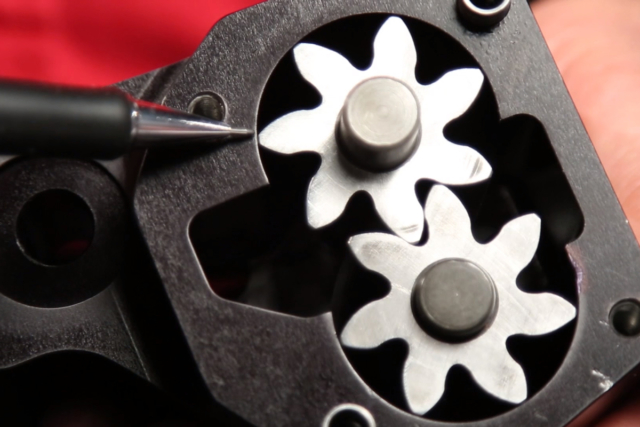
Melling improved the tooth to case seal on the Shark Tooth pumps. Notice the different tooth profiles.
Melling also improved the tip of the gear teeth to create a tighter seal with the pump housing. Melling states that this improvement has increased vacuum inside the pump resulting in increased efficiency and faster priming.
So far the new design is only available for the Small Block Chevy, although there are standard and high volume versions available. A billet aluminum version is also available for racing applications.
yes Ive seen several cases where guys failed to install the oil pump pick-up at the proper minimum 3/8"-to-1/2" off the oil pan floor clearance,
the result is the pump is starved for oil intake flow.
any time you allow an unsupported section of the oil pump pick-up to not have a welded or properly bolted external support bracing,
you can almost depend on constant flexing to eventually cause durability issues.
a good many engines benefit from having a bolt on external brace to the engines windage screen, if you think in three dimensions vs just two this can be done rather easily.
https://www.chevydiy.com/chevy-big-block-performance-lubrication-system-guide/
https://www.enginelabs.com/engine-tech/engine/useful-tips-installing-oil-pans-right-way/
one more in an ENDLESS LIST of reasons any serious shop needs to have access to a decent welder (A OXY-ACETYLENE TORCH in this case) a drill press and a dial caliper could allow you to fabricate a $1 l-bracket that could easily be the difference between a $10-$15K engine living a long trouble free life vs a very expensive self destructing engine , lesson in why adding a $1 brace would be almost mandatory
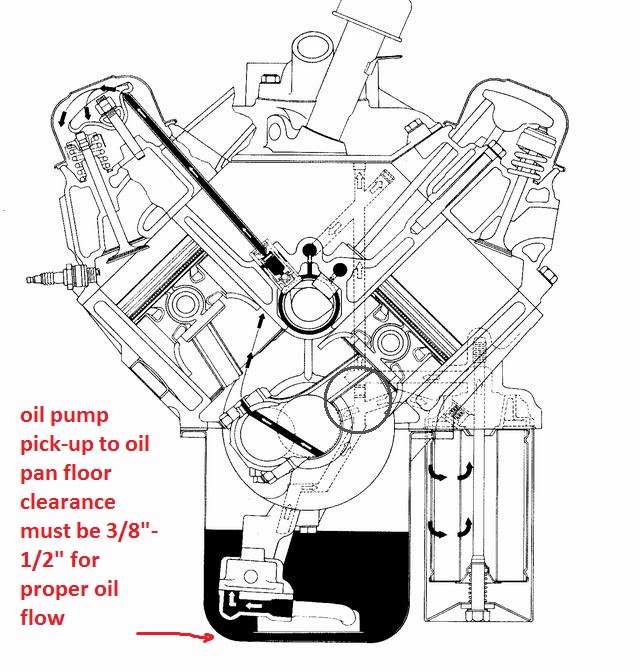
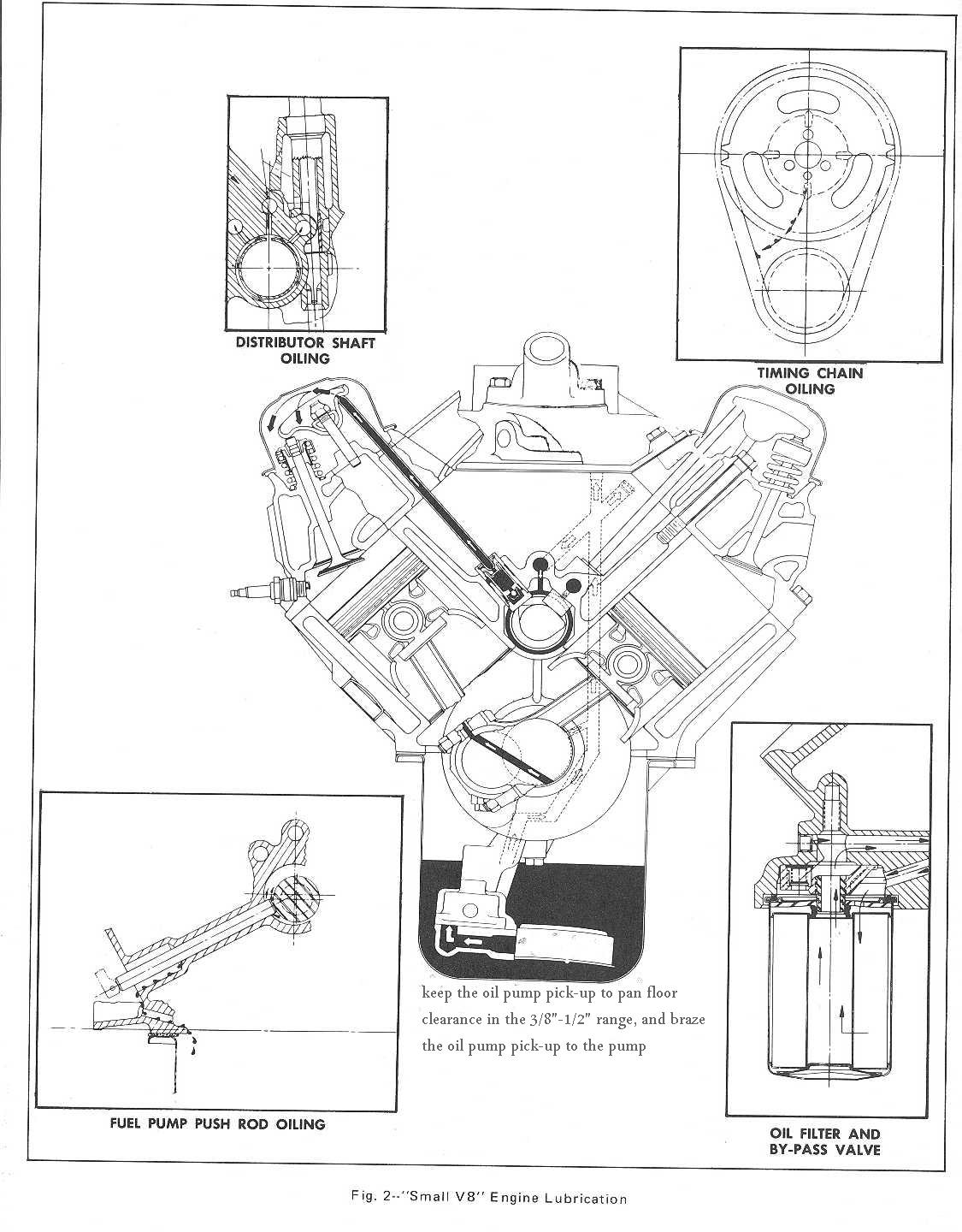
any time you allow an unsupported section of the oil pump pick-up to not have a welded or properly bolted external support bracing,
you can almost depend on constant flexing to eventually cause durability issues.
a good many engines benefit from having a bolt on external brace to the engines windage screen, if you think in three dimensions vs just two this can be done rather easily.
https://www.chevydiy.com/chevy-big-block-performance-lubrication-system-guide/
https://www.enginelabs.com/engine-tech/engine/useful-tips-installing-oil-pans-right-way/
one more in an ENDLESS LIST of reasons any serious shop needs to have access to a decent welder (A OXY-ACETYLENE TORCH in this case) a drill press and a dial caliper could allow you to fabricate a $1 l-bracket that could easily be the difference between a $10-$15K engine living a long trouble free life vs a very expensive self destructing engine , lesson in why adding a $1 brace would be almost mandatory
almost every mechanics tool box needs a few basic measuring tools and supplies
https://www.amazon.com/Claytoon-Set...d=1466872286&sr=8-17&keywords=plastilina+clay
http://www.utrechtart.com/Plastalin...currency=USD&gclid=CN3G75zOw80CFQgaaQodKbgFjA
http://garage.grumpysperformance.co...m-sure-your-convinced-its-the-oil-pump.11085/
http://garage.grumpysperformance.co...m-oil-pump-installed-now-no-oil-pressure.525/
http://garage.grumpysperformance.com/index.php?threads/bbc-oil-pump-in-a-sbc.2598/
thats a very common question but the answers no!
ALL THAT OIL FILTER BYE-PASS VALVE DOES IS ROUTE OIL FLOW PAST THE OIL FILTER
IF IT BECOMES SO CLOGGED WITH TRASH THAT THERES
A 10 PSI DIFFERENCE IN THE RESISTANCE TO OIL FLOW THROUGH THE FILTER
VS AROUND IT INTO THE BLOCKS OIL PASSAGES, oil enters the area over the oil filter in the block and is forced into the outer holes in the oil filter perimeter down through the case and filter element and up through the central hollow screw retention stud into the blocks oil passages, if the resistance too flow is too great the oil filter bye-pass valve routes oil around the filter directly from oil pump to the blocks oil passages.
MORE USEFUL INFO
yes the oil flows around the mounting stud,from oil pump to main cap to reach the engine oil passages, thru the oil filter
failure to use the correct oil pump,mounting stud, bolt or nut or carefully check clearances when mounting an oil pump can cause problems
ONE RATHER COMMON MISTAKE IS USING THE WRONG OIL PUMP STUD OR BOLT TO MOUNT THE OIL PUMP AS IF EITHER EXTENDS THRU THE REAR MAIN CAP IT CAN AND WILL BIND ON THE BEARING AND LOCK OR RESTRICT, SMOOTH ROTATION
http://garage.grumpysperformance.co...-friction-and-pumping-losses.8966/#post-31978
Id also point out that, if you properly set up a performance engine with the proper after market oil control components,the stock engine's oil system, can be vastly improved upon, youll want too, open the oil drain holes and use the proper oil pan, windage screen and crank scraper, its virtually impossible , in a well designed engine to run the engine "long enough to pump all the oil upstairs."
as with a properly designed baffled oil pan, with a carefully fitted and clearanced windage screen and crank scraper, the oil pump simply reaches a flow rate pumping oil out of about 100 or so potential lubricant flow leakage points
http://garage.grumpysperformance.com/index.php?threads/whats-a-windage-tray-do.64/
theres zero doubt an accusump oil feed is a good insurance policy to maintain oil pressure at the bearings, but simply having a 7-8 quart baffled oil pan,properly clearanced, windage screen and crank scraper will insure the oil pressure remains consistent , mostly due to the fact that theres always going to be enough oil over the oil pump pick-up, simply because theres really no room to pack most of the available oil volume in the upper engine ,plus the fact that hot oil flows well.
OIL PRESSURE read on the oil pressure gauge is a MEASURE of RESISTANCE to oil flow, you can REDUCE the pressure the gauge reads by either increasing the engine clearances or REDUCING the oil viscosity (thickness) so it flows thru the clearances faster with less resistance.(OR INSTALLING A SLIGHTLY WEAKER OIL PUMP BYE_PASS SPRING,that limits the pump pressure before it allows some oil to re-circulate back through the bye-pass valve ,from the high pressure back to the low pressure side of the pump impellers, but only the max pressure you reach is limited by the bye-pass spring,in your oil pressure bye pass circuit and its that spring resistance determines the point where the bye-pass circuit, opens and limits max oil pressure, but the bye-pass circuit has zero to do with anything else, if its functioning correctly,
there are many oil leakage points(100) in a standard Chevy engine.
16 lifter to push rod points
16 push rod to rocker arm points
32 lifter bores 16 x 2 ends
10 main bearing edges
9 cam bearing edges
16 rod bearing edges
2 distributor shaft leaks
1 distributor shaft to shim above the cam gear(some engines that have an oil pressure feed distributor shaft bearing.)
once oil exits the bearings or valve train it flows mostly by gravity back to the oil pan sump, but a properly designed windage screen and crank scraper correctly clearanced allows the spinning crank/rotating assembly to act like a directional pump that drags the vast majority of the oil flow back to the sump, by design.
http://garage.grumpysperformance.com/index.php?threads/whats-a-windage-tray-do.64/
http://garage.grumpysperformance.com/index.php?threads/oil-system-mods-that-help.2187/
http://garage.grumpysperformance.com/index.php?threads/basic-info-on-your-v8-lube-system.52/
Ive used several standard volume BBC oil pumps in SBC applications,
with very good success, but its critical you use and install the correct matching oil pump pick-up ,
that will maintain a 3/8"-1/2" minimum pick-up to oil pan floor clearance.
https://www.summitracing.com/parts/mel-10774
adding "ST" to the end of the existing melling SBC OIL PUMP part number denotes the helical gear set option
using anti-seize paste on bolt or stud threads helps prevent future problems
using safety wire pliers
ok, If your going to run a big block oil pump,in a 400 sbc, the drive shaft running the oil pump is NOT necessarily shorter, YOULL NEED TO MEASURE ACCURATELY, it depends on the oil pump that's being used, AND THIS VARIES BETWEEN MANUFACTURERS AND OIL PUMP MODELS
but in a 400 block it will need a narrowed waist area to bypass the 400 sbc larger diam. main bearing so the
ARP part # 134-7901 is used, there should be .050 minimum vertical slack/clearance once the oil pump drive shaft and distributor are assembled, obviously best verified with the engine on the engine stand and the oil pan removed with the intake and distributor temporarily assembled. a high capacity baffle oil pan equipped with a windage screen is highly advised, and verifying that the oil pump pick-up is correctly clearanced and brazed into place is mandatory
notice the welded tabs bracing the oil pump pick-up and that big block pumps have 5 cover screws unlike the small block pump with its 4 screw cover
read these links
http://garage.grumpysperformance.com/index.php?threads/oil-system-mods-that-help.2187/
http://garage.grumpysperformance.co...l-pumps-pressure-bye-pass-circuit-works.3536/
http://garage.grumpysperformance.com/index.php?threads/installing-an-oil-pump-pick-up-tube.1800/
http://garage.grumpysperformance.com/index.php?threads/basic-info-on-your-v8-lube-system.52/
http://www.jegs.com/i/ARP/070/134-7901/10002/-1
the milodon 18770 pump is used
http://www.jegs.com/i/Milodon/697/18770/10002/-1
the 3/4" oil pan pick up that fits your oil pan is used
http://www.milodon.com/oil-pans/circle- ... -chevy.asp
Chevrolet Performance 14091563
Left (Driver Side) Dipstick Plug
Chevrolet Performance 9421743
Right (Passenger Side) Dipstick Plug
example
#31504 oil pan
LATE MODEL & SPRINT -
COMPETITION SERIES, 7" DEEP
Designed for Dirt or Asphalt racing in Late Models, Modifieds, Sprint Cars that don't use a stock cross member location. The highly effective tray door system and the quick release windage tray assembly that is fastened into the pan provide 100% oil control at all times. This results in consistent oil pressure both in and out of the corners, as well as increases power output. Accepts stock large diameter flywheels. A sealed, dirt proof, screw in style dipstick and temperature sender bung are also welded into the pan.
Pan will fit a 4" stroke crank and Carillo or Eagle style rod.
Pan Capacity is 7 Quarts Plus Filter -
12" Sump Length, 7" Sump Depth
Left Hand, without dipstick 31504
Left Hand, with dipstick 31525
Oil Pump and Pick-Up Required:
Pickup with Milodon 18770 or Melling M99HV 18305
Pickup with Milodon 18750 or Melling M55HV / 10550 18306
Oil Pump 18750
Pump Drive Shaft 23050
Oil Pan Gasket 40100
Oil Pan Gasket, 1 piece, 41000
Rear Pan Baffle 32500
Oil Pan Bolts, vibration resistant 85000
related info, you'll want to read thru
viewtopic.php?f=54&t=1800
viewtopic.php?f=54&t=2187
viewtopic.php?f=54&t=2080
viewtopic.php?f=60&t=1948&p=5176&hilit=braze#p5176
keep in mind the sbc oil pump has 7 tooth gears and the big block pumps have 12 teeth making the oil flow smoother and less pulsed, plus having larger gears they tend to supply more oil at lower rpms
look closely and youll see the big block oil pump has a 5 bolt lower cover and the oil pump pick-up with its 3/4" feed seats into the main pump casting while the small block oil pump has a 4 bolt cover and the sbc oil pump pick-up with its 5/8" feed seats into the pumps cover plate
look at the picture below, the restrictive stock O.E.M. pickup if placed to close to the oil pan floor becomes a HUGE restriction to oil flow rates
as many of you gentlemen know MELLING CHANGED the casting on their standard M55 high volume oil pumps making them weaker and thinner
http://www.hotrod.com/articles/ccrp-0911-small-block-chevy-oil-pumps/
like the thin casting on the left
but I understand that it caused a good deal of bad press and they are currently changing back to the thicker castings, but theres still thousands of the thin casting pumps in inventory that should not be use in high performance applications
did you replace the oil pump drive shaft?
theres three common lengths in those oil pump drive shafts
theres a difference in length between the drive shaft used for a common sbc oil pump,
the drive shaft used for a BIG BLOCK oil pump in a SMALL BLOCK APPLICATION,
and a BIG BLOCK oil pump drive shaft length
all can be placed in a small block,or a big block but only the correct length will function in each application
theres a difference between the sbc and bbc drive shaft designs so don,t mix them up
theres MARK IV and MARK V BBC oil pump drive shafts that differ also
theres both BBC and SBC oil pump drives and a less common oil pump drive shaft designed for using a BBC oil pumps in a SBC application thats length is between those lengths
oil pump drive shafts can be custom machined, to gain clearance, you should have about .050 clearance with the distributor seated
The oil pump drive shaft on the left fits any
Gen. I smallblock except the 400. The 400
shaft on the right is necked down in the center
portion to clear the wider main caps found on
the 400.
the aftermarket drive shafts are held to a much higher strength tolerance, and a steel collar and and the reduced mid section are both good features, for the very low price Id strongly suggest pitching the stock drive shaft in the dumpster
be sure you select the correct oil pump drive shaft
SB - is a bit shorter about 5.75"
BB - is a bit longer about - 6.50" or so
there should be about .050 vertical movement, of the oil pump, oil pump drive shaft between the oil pump and lower distributor gear with the manifold and distributor seated correctly
Small Block Chevy Oil & Lubrication Systems
The Chevy smallblock lubrication system is very reliable and presents no design defects to worry
about. Just keep everything clean. Change the oil and filter on a regular basis, and it will provide good
service for more than one hundred thousand miles. If the recommended main and rod bearing and
rod side clearances are maintained, a stock volume oil pump is all that is required. A high-volume or
high-pressure pump or an oil pump from a bigblock Chevy are not needed in most street applications.
These other pumps take additional horsepower to run and add more strain on the cam/distributor
drive gears and drive shaft. Checking the operating clearances on the stock oil pump and optimizing
them if necessary, will ensure adequate oil pressure. The clearance between the pump gears and the
pump gear cover should be .002" to .0025". If there is more clearance, take a sheet of 400-grit
sandpaper and some oil, then move the main pump body in a figure-8 motion over the wet sandpaper
to remove material until the clearance is correct. If there is less than the minimum clearance, you can
sand the pump gears. Remember to Loctite the pump cover bolts when you put the pump back
http://www.summitracing.com/search?keyword=5556F&dds=1
(chevy small block oil pump bye-pass springs)
http://www.summitracing.com/parts/mel-77060
(chevy big block oil pump bye-pass springs)
GM Small Block Performance Pumps
10550
High volume performance upgrade for M-55HV.
25% increase in volume over stock oil pump.
The 10550 housing and cover are CNC machined and phosphate coated.
The lower pressure spring is included to reduce pressure if desired.
Includes intermediate shaft with steel guide. Uses 5/8” press in screen.
10551
High volume performance upgrade for M155HV.
25% increase in volume over stock oil pump.
The 10551 housing and cover are CNC machined and phosphate coated.
The lower pressure spring is included to reduce pressure if desired.
Includes intermediate shaft with steel guide. Uses 3/4” press in screen.
10552
High volume performance oil pump.
10% increase in volume over stock oil pump.
The 10552 is manufactured with the drive and idler shafts extended to allow for additional support in the cover eliminating dynamic shaft deflection at increased RPM levels.
The cover is doweled to the pump housing to assure alignment of the shaft bores.
Screw in plug retains relief valve spring instead of pin.
Relief hole in cover uses screw in plug instead of pressed cup plug.
All bolts are self locking socket heads, with the wrench supplied.
The housing and cover are CNC machined and phosphate coated.
Includes intermediate shaft with steel guide. Uses both 3/4” bolt on or press in screen.
The lower pressure spring is included to reduce pressure if desired.
Patent No. 5,810,571.
10552C (Anti-Cavitation)
10552CHigh volume performance oil pump.
10% increase in volume over stock oil pump.
Same as the 10552 with the addition of grooves machined in the body and cover. The grooves reduce cavitation effects in high RPM applications.
Includes intermediate shaft with steel guide.
Uses both 3/4” bolt on or press in screen.
Using this oil pump will reduce pressure at idle.
The 10552C uses the high pressure spring only.
Racing Applications Only.
Patent No. 5,810,571.
10553
10553High pressure performance upgrade for M-55 & M-55A.
Standard volume oil pump.
The 10553 housing and cover are CNC machined and phosphate coated.
Manufactured with pink spring installed for higher pressure (M-55A).
To change pump to lower pressure (M-55) install the supplied yellow spring.
Includes intermediate shaft with steel guide.
The 10553 uses a 5/8” press in screen.
10554
Performance upgrade for M155. Standard volume oil pump.
The 10554 housing and cover are CNC machined and manganese phosphate coated.
Manufactured with pink spring installed for higher pressure.
To change pump to lower pressure install the supplied yellow spring.
Includes intermediate shaft with steel guide.
The 10554 uses a 3/4” press in screen.
10555
High Volume performance upgrade for the 10550 oil pump.
25% increase in volume over stock oil pump.
The 10555 is manufactured with the drive and idler shafts extended to allow for additional support in the cover eliminating dynamic shaft deflection at increased RPM levels.
The cover is doweled to the pump housing to assure alignment of the shaft bores.
Screw in plug retains relief valve spring instead of pin.
Relief hole in cover uses screw in plug instead of pressed cup plug.
All bolts are self locking socket heads, with the wrench supplied.
The housing and cover are CNC machined and manganese phosphate coated.
Includes intermediate shaft with steel guide.
Uses both 3/4” bolt on or press in screen.
The lower pressure spring is included to reduce pressure if desired.
Patent No. 5,810,571
10555C (Anti-Cavitation)
High volume performance upgrade for the 10550 oil pump.
25% increase in volume over stock oil pump.
Same as the 10555 with the addition of grooves machined in the body and cover. The grooves reduce cavitation effects in high RPM applications.
Includes intermediate shaft with steel guide.
Uses both 3/4” bolt on or press in screen.
Using this oil pump will reduce pressure at idle.
The 10555C uses the high pressure spring only.
Racing Applications Only.
Patent No. 5,810,571
10990
High volume performance upgrade for the M-99HV-S.
($144 price is outrageous in my opinion)
Increase in volume of 25% over stock oil pump.
The 10990 is a Big Block style oil pump made to fit the Small Block applications.
The drive and idler shafts have been extended to allow for additional support in the cover. Additional support eliminates dynamic shaft deflection at increased RPM levels.
The cover is doweled to the pump housing to assure alignment of the shaft bores.
The relief valve has a screw-in plug instead of a pin.
The housing and cover are CNC machined and phosphate coated.
An additional spring, the original stock replacement is supplied which will reduce bypass pressure if needed.
Includes intermediate shaft with steel guide.
Uses 3/4” press in screen.
Patent No. 5,810,571.
10990C (Anti-Cavitation)
High volume performance upgrade for the M-99HV-S.
Increase in volume of 25% over stock oil pump.
The same as the 10990 except with the addition of grooves machined in the housing and cover. The grooves reduce cavitation effects in high RPM applications.
Using this oil pump will reduce pressure at idle.
Includes intermediate shaft with steel guide.
Uses 3/4” press in screen.
Racing applications only.
Patent No. 5,810,571.
GM B.B. Performance Pumps
10770
High volume performance upgrade for M-77HV.
25% increase in volume over stock pump.
The housing and cover are CNC machined and phosphate coated.
The lower pressure spring is included to reduce pressure if desired.
Includes intermediate shaft with steel guide.
Uses 3/4” press in screen.
10774
10774Standard volume performance upgrade for M-77.
The housing and cover are CNC machined and phosphate coated.
The lower pressure spring is included to reduce pressure if desired.
Includes intermediate shaft with steel guide.
Uses 3/4” press in screen.
10778
High volume performance upgrade for the 10770.
Increase in volume of 25% over stock oil pump.
The drive shaft has been manufactured from chrome-moly steel.
The drive and idler shafts have been extended to allow for additional support in the cover. Additional support eliminates dynamic shaft deflection at increased RPM levels.
The cover is doweled to the pump housing to assure alignment of the shaft bores.
The relief valve has a screw-in plug instead of a pin.
The housing and cover are CNC machined and phosphate coated.
An additional spring, the original stock replacement is supplied which will reduce bypass pressure if needed.
Includes intermediate shaft with steel guide.
Uses 3/4” press in screen.
Patent No. 5,810,571.
10778C (Anti-Cavitation)
High volume performance upgrade for the 10770.
Increase in volume of 25% over stock oil pump.
The same as the 10778 except with the addition of grooves machined in the housing and cover. The grooves reduce cavitation effects in high RPM applications.
Using this oil pump will reduce pressure at idle.
Includes intermediate shaft with steel guide.
Uses 3/4” press in screen.
Racing applications only.
Patent No. 5,810,571
RELATED INFO
https://www.hotrod.com/articles/ccrp-0911-small-block-chevy-oil-pumps/
http://garage.grumpysperformance.co...for-noisy-hydraulic-lifters.14379/#post-73891
viewtopic.php?f=54&t=2598
http://www.hotrod.com/how-to/engine/ccrp-0911-small-block-chevy-oil-pumps/
